Power consumption and compliance with standards
When it comes to power consumption, there are actually no big secrets, because what NVIDIA specifies as TGP is largely complied with. With just under 15 watts in idle, one is in the range of many Boearpartner cards of the GeForce RTX 2070 Super to RTX 2080 Ti, even if relatively high. The partial load ranges are implemented relatively economically, which could also be due to the better controlled clock rate. However, the card reaches 330 watts under real full load in the Witcher 3 at Ultra-HD and full warming, i.e. 10 watts more than predicted and stated in the specs.
But this is not the whole truth, because the power consumption is very resolution dependent. Ask the CPU, which in some situations already slows down the fast sweeper a little bit. Not in every game, but in some it happens. We had already analyzed which exactly these are when we were talking about the combined power consumption with the CPU and its individual listings.
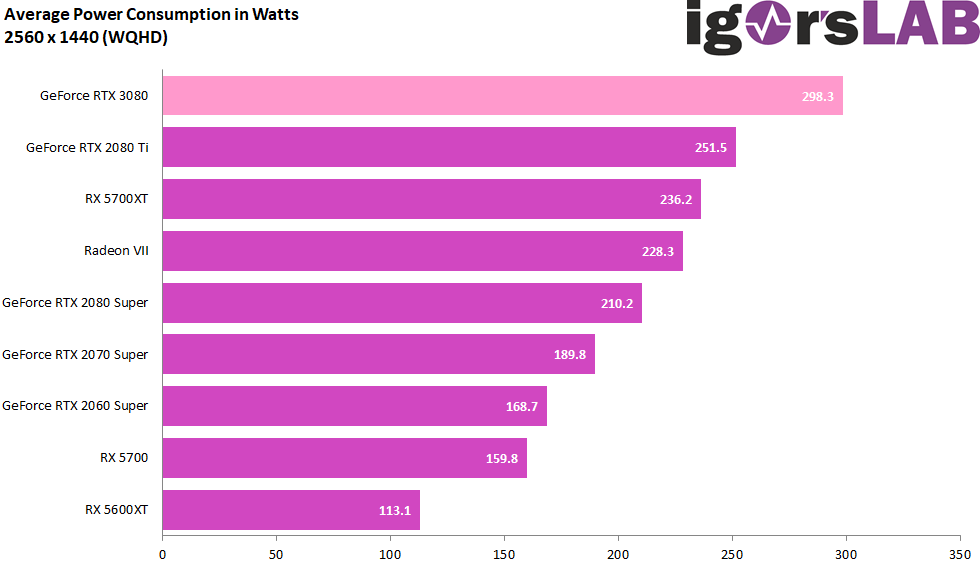 However, if you add up the power consumption in Ultra-HD, which I measured in all games over the entire runtime, then everything is again at the specified 320 watts for the TGP, a spot landing, because the CPU doesn’t limit any more.
However, if you add up the power consumption in Ultra-HD, which I measured in all games over the entire runtime, then everything is again at the specified 320 watts for the TGP, a spot landing, because the CPU doesn’t limit any more.
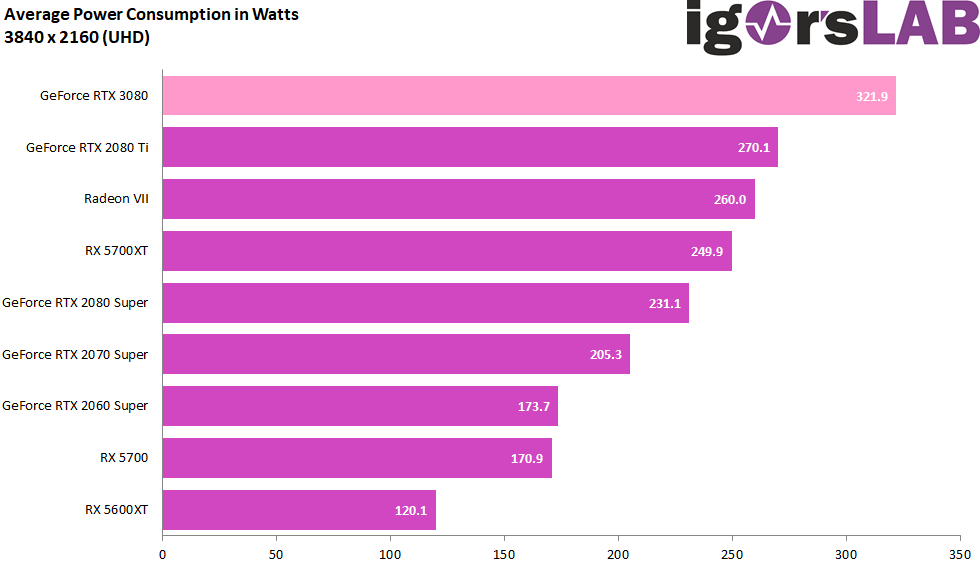 The following table now shows the maximum values of the respective load scenarios.
The following table now shows the maximum values of the respective load scenarios.
Which brings us to the specifications, because at the end of the day, the firmware clearly regulates what is possible and what is allowed as well as maximum and minimum against. A maximum of 370 are allowed for the VU, which could be retrieved with the appropriate software.
Let us now compare the voltage (NVDD). which can (technically speaking) be between 0.7 and 1.2 volts at Ampere and which for safety reasons rarely breaks the 1-volt limit on normal consumer cards. You can see very clearly from the curve that the slightly warmer card operates with less voltage changes.
Let’s now move on to the load on the motherboard slot, whose load is specified by the PCI SIG as 5.5 amps. This results in a maximum power of 66 watts at 12 volts. You can see very clearly that under full load 5 Amperes are reached again, which is of course permissible. But it is still much more than most Turing cards, probably also to relieve the 12-pin connector of the 12-volt rail.
Transients and power supply recommendation
As I have already proved in detail in my basic article “The battle of graphics card against power supply – power consumption and load peaks demystified”, there are also higher loads in the millisecond range, which can lead to unexplainable shutdowns in the case of unfavorably designed or improperly equipped power supplies. The TBP (Typical Board Power) measured by the graphics card manufacturer or the reviewers alone does not really help in this case for a stable system design.
Peaks with intervals between 1 and 10 ms can lead to shutdowns in very fast reacting protective circuits (OPP, OCP), especially in multi-rail power supplies, although the average power consumption is still within the standard. For this card, I would therefore calculate at least 430 bsi 450 watts for the normal OC with up to 370 watts as the power limit as the graphics card load in proportion to the total secondary power consumption of the system, in order to have enough reserves for the worst case scenario. A short excerpt with higher resolution shows us now the 20 ms measurements (10 μS intervals), as I let them run automatically for value determination:
- 1 - Introduction, Unboxing and Test System
- 2 - Teardown, PCB analysis and Cooler
- 3 - Gaming Performance: WQHD and Full-HD with RTX On
- 4 - Gaming Performance: Ultra-HD with and without DLSS
- 5 - FPS, Percentiles, Frame Time & Variances
- 6 - Frame Times vs. Power Comsumption
- 7 - Workstation: CAD
- 8 - Studio: Rendering
- 9 - Studio: Video & Picture Editing
- 10 - Power Consumption: GPU and CPU in all Games
- 11 - Power Consumption: Efficiency in Detail
- 12 - Power Consumption: Summary, Transient Analysis and PSU Recomendation
- 13 - Temperatures and Thermal Imaging
- 14 - Noise and Sound Analysis
- 15 - NVIDIA Broadcast - more than a Gimmick?
- 16 - Summary, Conlusion and Verdict















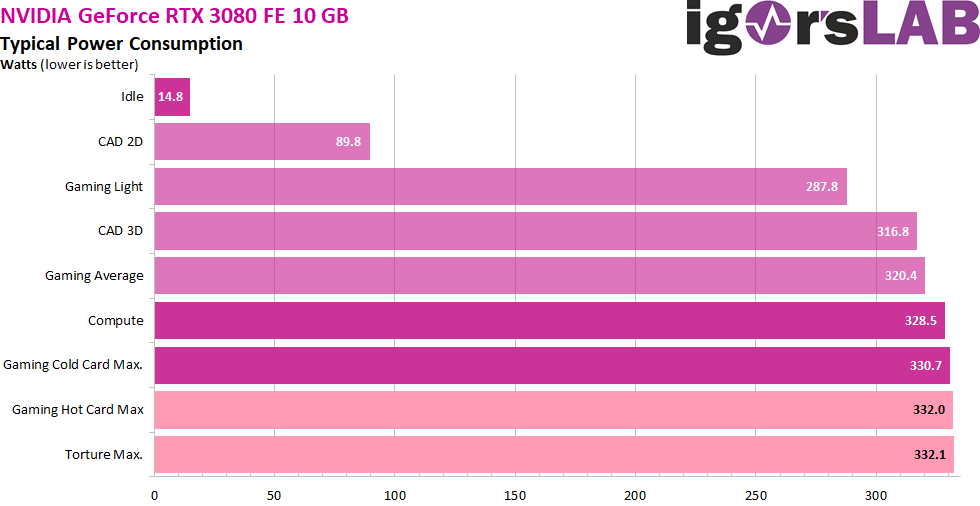
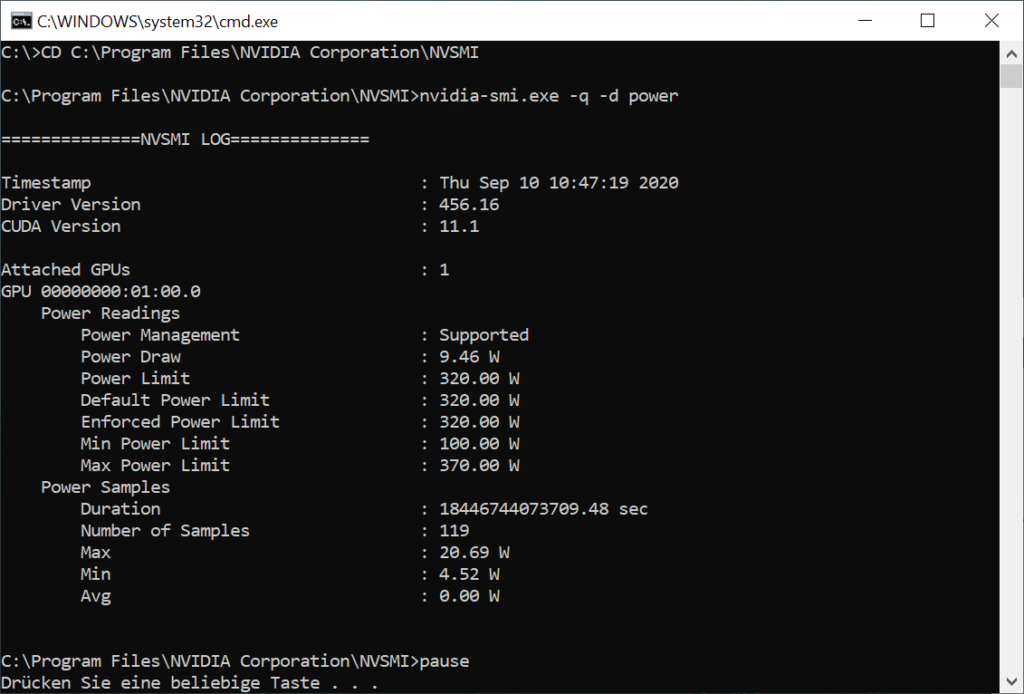

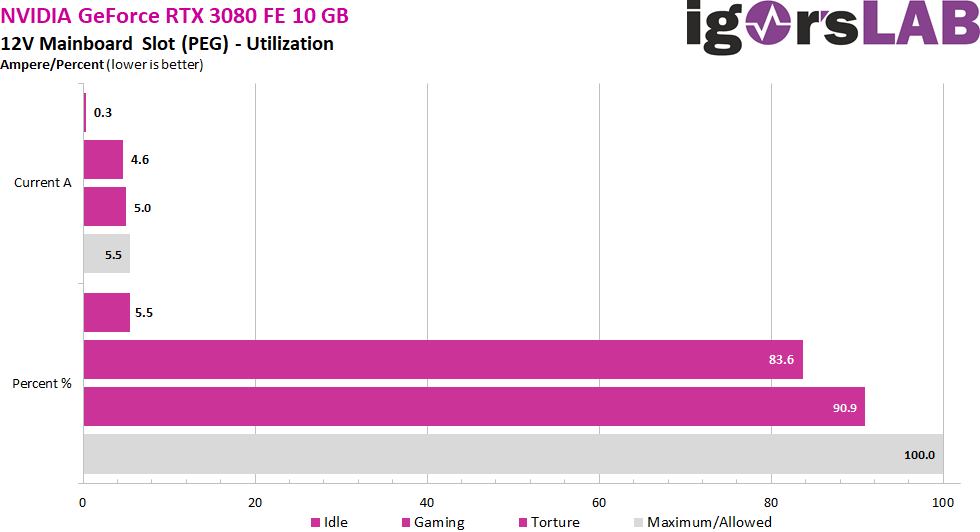
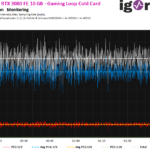
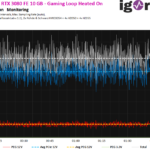
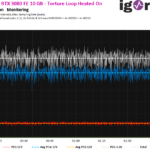
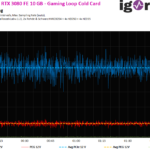
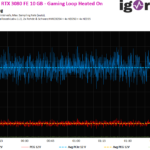
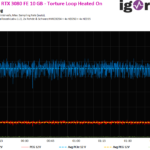
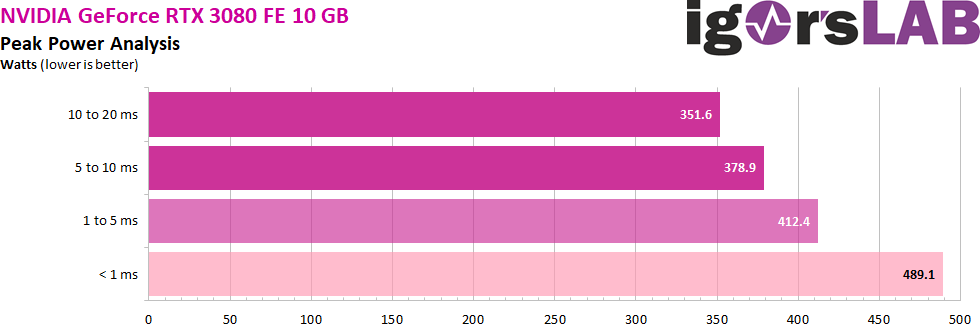

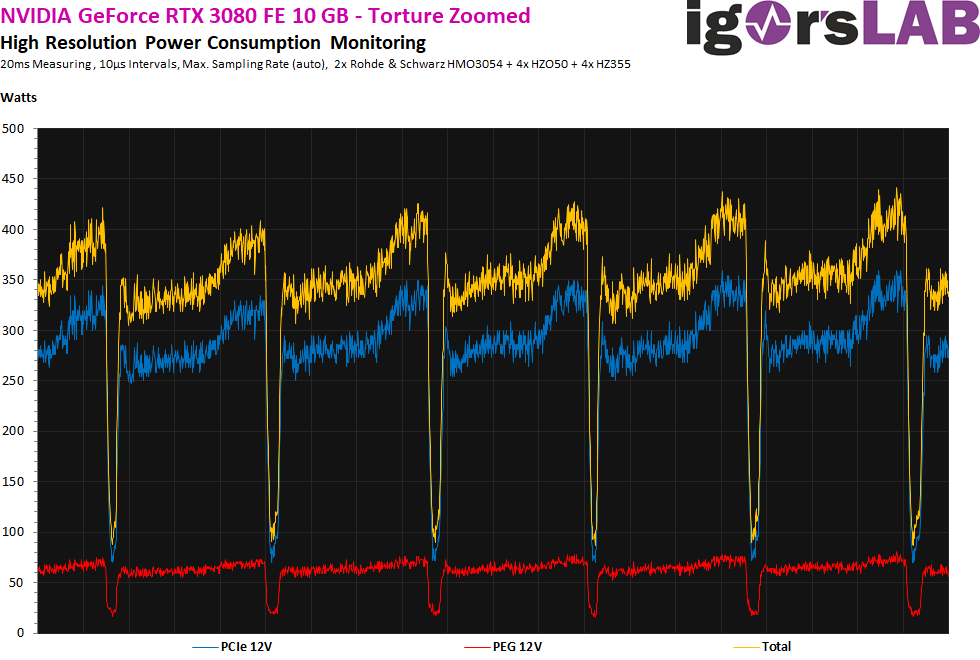


















Kommentieren